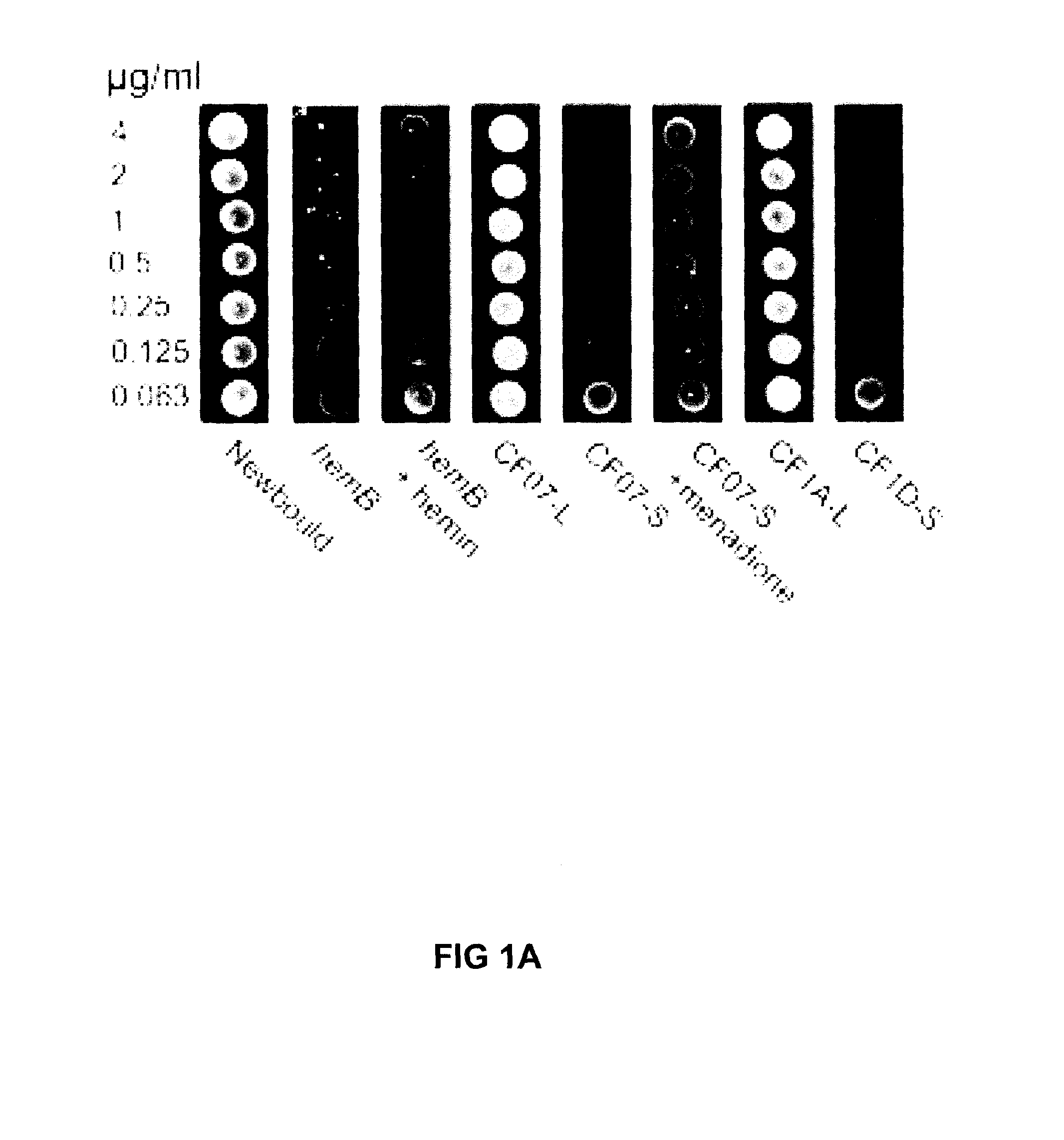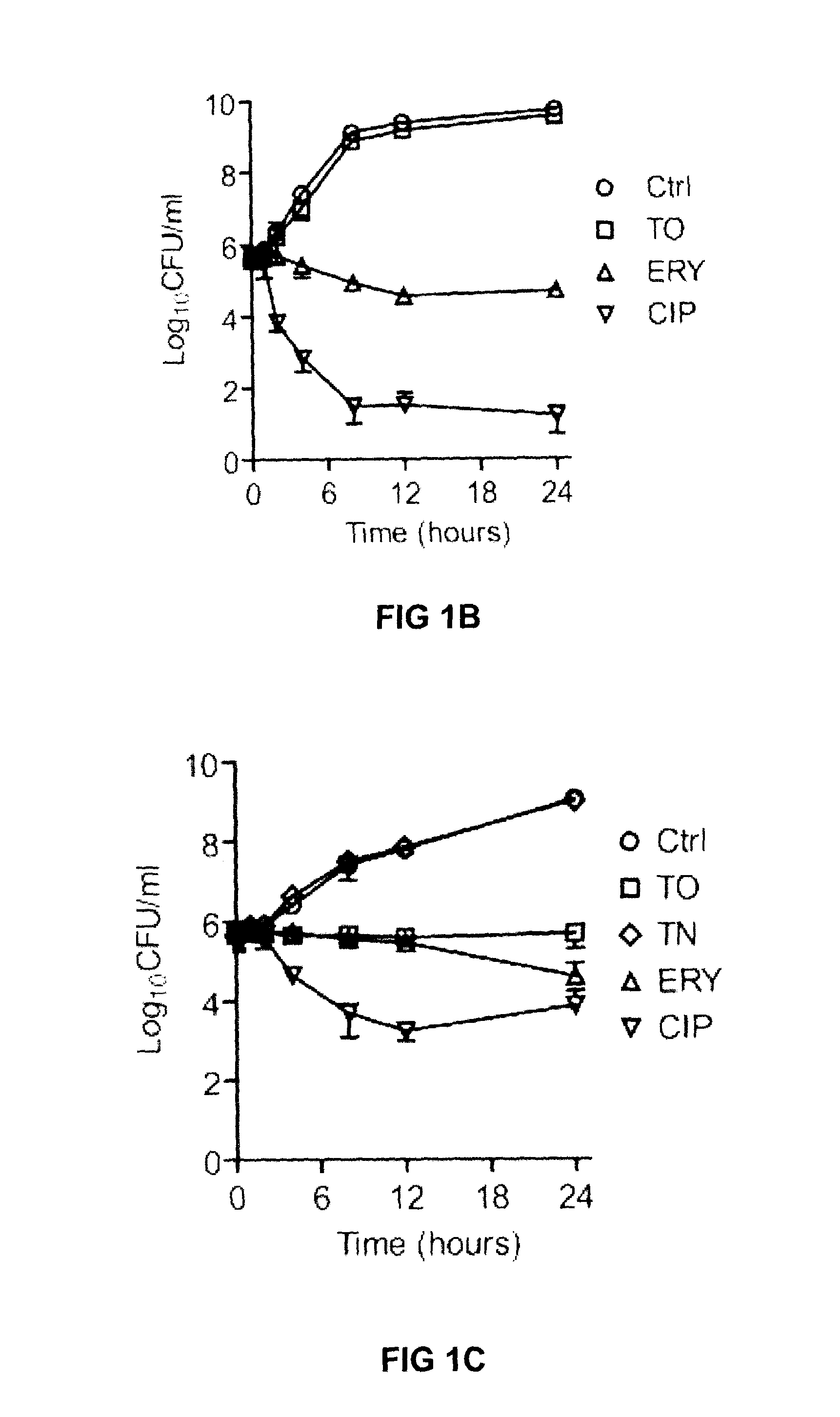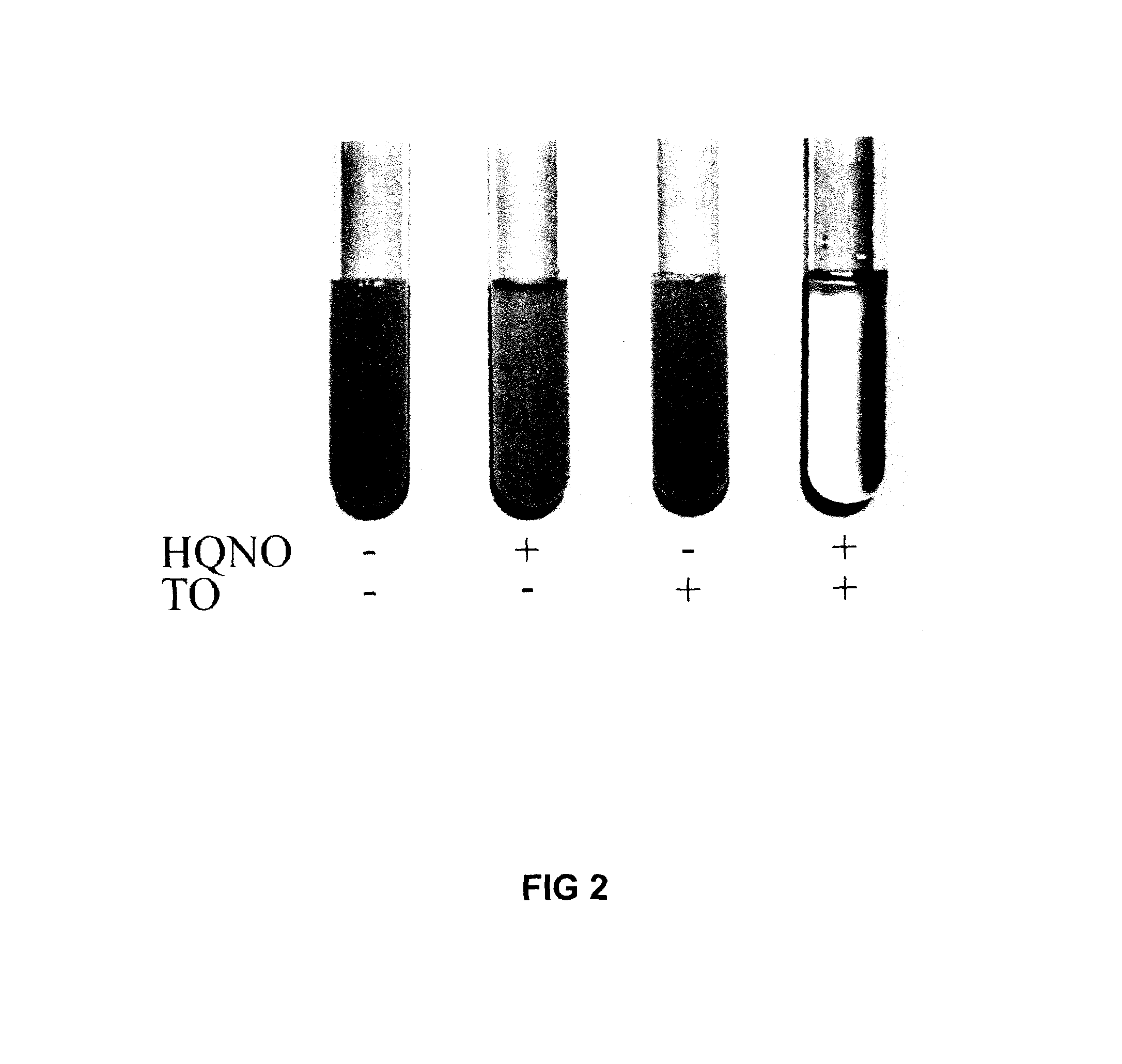Steroid alkaloids and uses thereof as antimicrobial agents against electron transport-deficient microbes and as potentiators for antimicrobial agents against pathogenic bacteria
- Summary
- Abstract
- Description
- Claims
- Application Information
AI Technical Summary
Benefits of technology
Problems solved by technology
Method used
Image
Examples
example 1
Antibacterial Activity of Tomatidine Against Electron Transport-Deficient Staphylococcus aureus Small-Colony Variants (SCVs) Measured with MIC
[0264]Tomatidine (formula 1.1 wherein R is H) specifically and selectively inhibits the growth of S. aureus SCVs whereas it has no significant impact on the growth of normal S. aureus strains.
[0265]The symbols used herein to denote the orientation of the hydrogen atoms are those used in the tomatidine formula presented below at the left, wherein “=” denotes -H and “•”-H. They are used to identify the stereochemistry of tertiary carbons (having three direct neighbors other than hydrogens). The classical representation of the hydrogens is shown in the right for comparison purposes. Such convention is used to simplify the formulas.
[0266]Method:
[0267]The minimal inhibitory concentrations (MICs) (i.e. lowest concentration of an antimicrobial that will inhibit the visible growth of a microorganism after incubation), of tomatidine (formula 1.1 above,...
example 2
Antibacterial Activity of Tomatidine Against Electron Transport-Deficient Staphylococcus aureus Small-Colony Variants (SCVs) and Against the Anaerobic Bacterium Clostridium perfringens Measured with an Agar Diffusion Method
[0270]Tomatidine (formula 1.1, wherein R is H) specifically and selectively inhibits the growth of all types of S. aureus SCVs whereas it has no significant impact on the growth of normal S. aureus strains. The growth of the anaerobic strain C. perfringens (also considered herein to be electron transport-deficient) is also inhibited by tomatidine.
[0271]Method:
[0272]The susceptibility of various S. aureus SCVs as well as of the anaerobe strain Clostridium perfringens ATCC 13124 to tomatidine was tested by an agar diffusion method. S. aureus strains SCV NewbouldΔhemB (hemin auxotroph), SCV CF07-S (menadione auxotroph), SCV CF6A-S (thymidine auxotroph), SCV CF41A-S (unknown auxotrophy), and strain C. perfringens ATCC 13124 were spread on the surface of Tryptic Soy ag...
example 3
Effect of Inducing an Electron Transport Chain Defect in Normal Staphylococcus aureus Strains on their Susceptibility to Tomatidine
[0275]The inhibition of electron transport by 4-hydroxy-2-heptylquinoline-N-oxide (HQNO), a known electron transport inhibitor (Hoffman et al., 2006; Mitchell et al, 2010b), sensitizes normal strains to tomatidine. This shows that tomatidine possesses a specific antibacterial activity against strains that have a defective electron transport system like SCVs.
[0276]Method:
[0277]The MICs of tomatidine, tomatine and control antibiotics (gentamicin, vancomycin, erythromycin, ciprofloxacin and oxacillin) were determined against the normal strains ATCC 29213 and CF07-L as well as against the SCV strain CF07-S in the presence of 20 μg HQNO / ml. Results are reported in Table 3 below. Also, the normal S. aureus strain CF07-L was inoculated at ˜105-106 CFU / ml in BHI in absence or presence of HQNO and / or tomatidine at 20 μg / ml and 8 μg / ml, respectively. Cultures were...
PUM
| Property | Measurement | Unit |
|---|---|---|
| Digital information | aaaaa | aaaaa |
| Electrical resistance | aaaaa | aaaaa |
| Transport properties | aaaaa | aaaaa |
Abstract
Description
Claims
Application Information
 Login to View More
Login to View More - R&D
- Intellectual Property
- Life Sciences
- Materials
- Tech Scout
- Unparalleled Data Quality
- Higher Quality Content
- 60% Fewer Hallucinations
Browse by: Latest US Patents, China's latest patents, Technical Efficacy Thesaurus, Application Domain, Technology Topic, Popular Technical Reports.
© 2025 PatSnap. All rights reserved.Legal|Privacy policy|Modern Slavery Act Transparency Statement|Sitemap|About US| Contact US: help@patsnap.com



